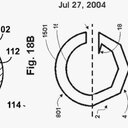Clinicopathological Features and Prognosis of Papillary Thyroid Microcarcinoma for Surgery and Relationships with the BRAFV600E Mutational Status and Expression of Angiogenic Factors.
Nyckelord
Abstrakt
OBJECTIVE
To investigate the clinicopathological characteristics of papillary thyroid microcarcinoma (PTMC) for surgery by comparing the difference between PTMC and larger papillary thyroid carcinoma (LPTC).
METHODS
We analyzed the differences in the clinicopathological characteristics, prognosis, B-type RAF kinase (BRAF)V600E mutational status and expression of angiogenic factors, including pigment epithelium-derived factor (PEDF), Vascular Endothelial Growth Factor (VEGF), and hypoxia-inducible factor alpha subunit (HIF-1α), between PTMC and LPTC by retrospectively reviewing the records of 251 patients with papillary thyroid carcinoma, 169 with PTMC, and 82 with LPTC (diameter >1 cm).
RESULTS
There were no significant differences in the gender, age, multifocality, Hashimoto's thyroiditis, TNM stage, PEDF protein expression, rate of recurrence, or mean follow-up duration between patients with PTMC or LPTC. The prevalence of extrathyroidal invasion (EI), lymph node metastasis (LNM), and BRAF mutation in patients with PTMC was significantly lower than in patients with LPTC. In addition, in PTMC patients with EI and/or LNM and/or positive BRAF (high-risk PTMC patients), the prevalence of extrathyroidal invasion, Hashimoto's disease, lymph node metastasis, tumor TNM stage, PEDF positive protein expression, the rate of recurrent disease, and the mRNA expression of anti-angiogenic factors was almost as high as in patients with larger PTC, but with no significant difference.
CONCLUSIONS
Extrathyroid invasion, lymph node metastases, and BRAFV600E mutation were the high risk factors of PTMC. PTMC should be considered for the same treatment strategy as LPTC when any of these factors is found. Particularly, PTMC with BRAFV600E gene mutations needed earlier surgical treatment. In addition, the high cell subtype of PTMC with BRAFV600E gene mutation is recommended for total thyroidectomy in primary surgery to reduce the risk of recurrence.



